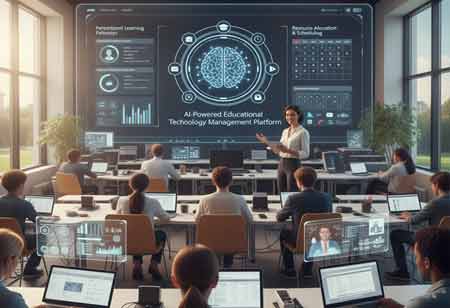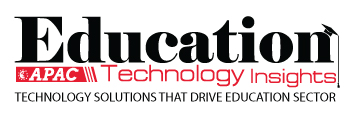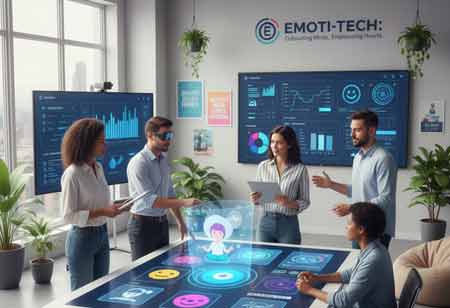THANK YOU FOR SUBSCRIBING
Be first to read the latest tech news, Industry Leader's Insights, and CIO interviews of medium and large enterprises exclusively from Education Technology Insights
AI as Architect of Integrated Learning
AI is transforming fragmented educational technology into integrated ecosystems, enabling personalized learning experiences, reducing administrative burden for educator, and providing administrators with strategic insights to enhance student success.

By
Education Technology Insights | Friday, October 10, 2025
Stay ahead of the industry with exclusive feature stories on the top companies, expert insights and the latest news delivered straight to your inbox. Subscribe today.
For decades, educational technology functioned like a cluttered workshop, with Student Information Systems handling records and Learning Management Systems managing course content in isolation. Separate tools for assessment, parent communication, and library management were scattered about, each performing its function in isolation. While individually useful, these tools created digital silos, forcing educators and administrators to bridge the gaps manually. This fragmentation led to duplicated efforts, disconnected data, and a disjointed experience for the most critical user: the student. Today, AI is no longer just another tool in the workshop; it is the architect, transforming this collection of disparate software into intelligent, integrated, and responsive educational ecosystems.
This fundamental shift from isolated applications to a unified platform represents one of the most significant evolutions in modern education management. The integrated platforms of today, powered by AI, are designed to create a seamless flow of information that empowers every stakeholder within the learning community. The underlying magic lies in AI's ability to ingest, process, and derive meaningful insights from the vast streams of data generated across the institution. By leveraging machine learning algorithms, natural language processing, and predictive analytics, these ecosystems are creating a learning environment that is not just digitized, but also truly intelligent.
The Personalized Student Journey
At the heart of this transformation is the ability to deliver a deeply personalized learning experience at scale, something that was once an aspirational dream. In the old model, technology offered a one-size-fits-all approach to content delivery. Now, the AI-driven ecosystem acts as a personal academic guide for every student. It continuously analyzes a student's interactions with course materials, their performance on quizzes, their pace of progress through modules, and even their engagement levels.
This data, once stored within the LMS, now powers the personalization engine. If a student struggles with a specific mathematical concept, the platform can automatically recommend supplementary video tutorials, practice exercises, or relevant reading materials to support their learning. It can adapt the difficulty of subsequent assignments in real-time, ensuring the student is challenged but not overwhelmed. This continuous feedback loop fosters a sense of mastery and agency, moving beyond static curricula to create a fluid and individualized learning path that adapts to the unique needs and pace of each learner. The platform doesn’t just present information; it curates a journey.
Empowering the Modern Educator
For educators, the transition from siloed tools to an integrated ecosystem is a story of liberation and empowerment. The administrative burden has long diverted precious time and energy away from the core mission of teaching. AI is systematically dismantling this burden by automating routine tasks. Grading of objective assessments, tracking attendance, and generating performance reports can now be handled instantly, freeing teachers to focus on higher-impact activities such as mentoring, facilitating complex discussions, and providing nuanced, subjective feedback.
More profoundly, these platforms offer educators a comprehensive, data-rich dashboard for their classrooms. Instead of logging into multiple systems to piece together a picture of a student's progress, a teacher can now view an integrated picture that combines academic performance, attendance records, engagement metrics, and behavioral notes. Predictive analytics is a key feature of this new toolkit. The system can flag students who are at risk of falling behind long before the risk becomes a reality, identifying subtle patterns of disengagement or misunderstanding that a human might miss. This enables timely and targeted interventions. The AI can even suggest differentiated instruction strategies or recommend optimal student groupings for collaborative projects based on complementary skills and learning styles, turning the teacher from a sole purveyor of knowledge into an informed facilitator of learning.
Strategic Oversight for Administration
The benefits of this integration extend powerfully to the administrative level, transforming institutional management from a reactive to a proactive endeavor. School leaders and administrators are no longer forced to make critical decisions based on historical data presented in cumbersome spreadsheets. The integrated ecosystem provides a real-time, bird's-eye view of the entire institution's health.
By aggregating data from admissions, academics, finance, and student life, AI models can uncover institution-wide trends and generate predictive insights. Administrators can analyze course enrollment patterns to optimize resource allocation, track student retention rates to identify systemic issues, and ensure that curriculum development is aligned with both student performance data and future workforce needs. This strategic intelligence supports a range of activities, from long-term capacity planning and budget forecasting to ensuring compliance with accreditation standards and regulations. The institution itself becomes a learning organization, capable of adapting and evolving based on a constant stream of intelligent, data-driven feedback.
The seamless flow of information is the lifeblood of this new model. An assessment score entered by a teacher instantly updates the student’s personalized learning path, informs the analytics on the teacher’s dashboard, contributes to the school-wide performance metrics visible by the principal, and can even trigger an automated progress update to a parent’s communication portal. It is this interconnectedness that unlocks the true potential of educational technology, creating a system where every piece of data serves a larger purpose, ultimately converging on the goal of enhancing student success. The era of single-purpose tools is fading, making way for intelligent ecosystems that promise a more efficient, insightful, and profoundly more personal future for education.
I agree We use cookies on this website to enhance your user experience. By clicking any link on this page you are giving your consent for us to set cookies. More info

However, if you would like to share the information in this article, you may use the link below:
www.educationtechnologyinsightsapac.com/news/ai-as-architect-of-integrated-learning-nid-3492.html






